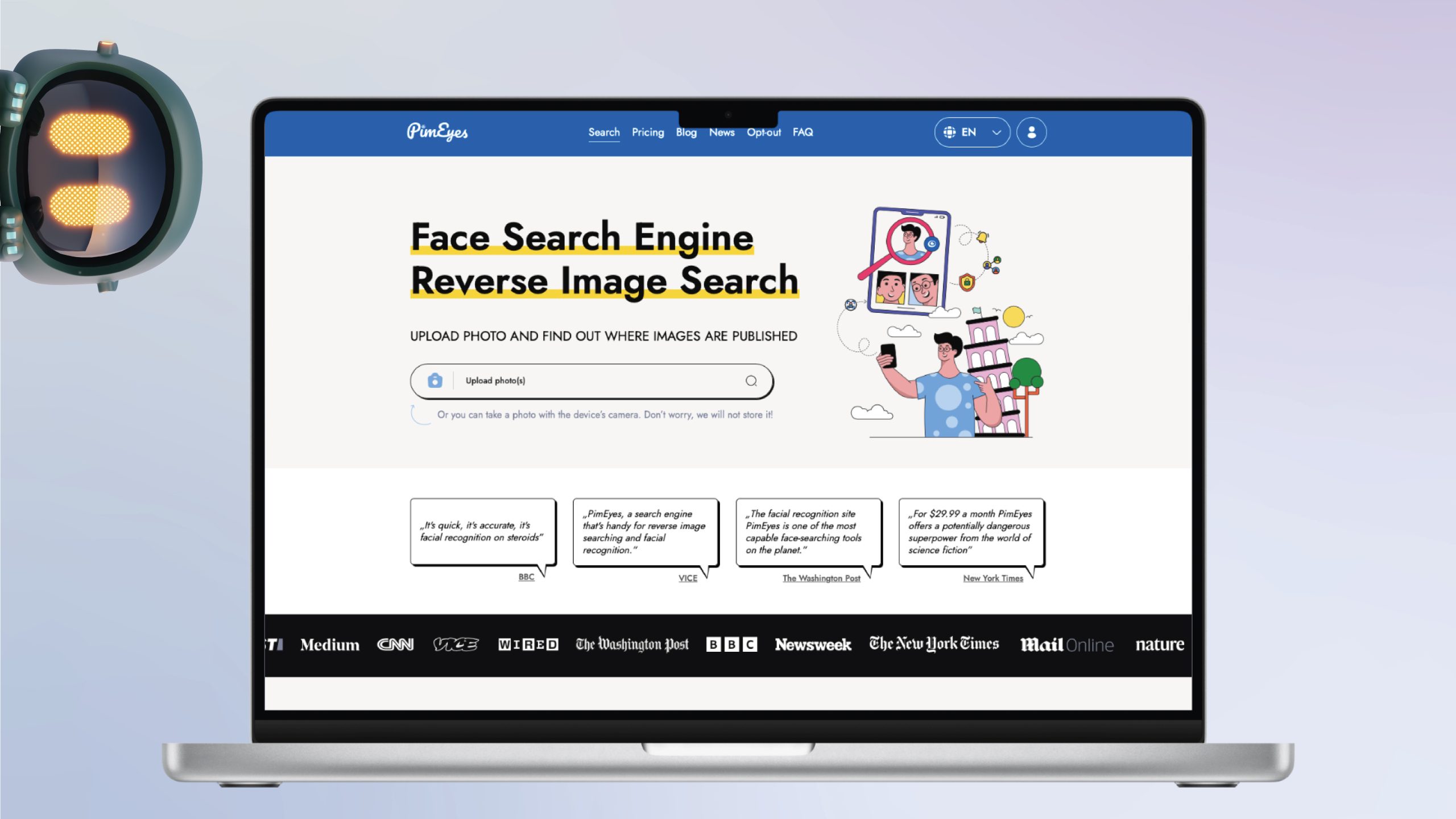The week is over, and it’s time for a new blog post! Today, we’re diving into a current topic: PimEyes and the end of anonymity on the web. You know the saying, “The internet never forgets,” right? Many are familiar with the saying “The internet never forgets.” Tools like PimEyes are making it increasingly possible to specifically find and track images and traces on the web – even within the gigantic amount of digital content generated daily. How does this technology affect privacy? In our latest post, we take a closer look and highlight the opportunities and challenges that come with it.
PimEyes – The end of anonymity on the web?
The digital age has not only brought us a networked world, but also a disturbing reality: anonymity on the web is increasingly dwindling. One example of this is PimEyes, a platform that uses facial recognition technology to allow anyone to upload an image and find similar images online. This blog post highlights the fascinating, but also disturbing, aspects of this technology.
PimEyes – The technology behind it
PimEyes essentially functions as a facial search engine. Uploaded image material is used to search the web for similar faces on websites, blogs, or social media. What sounds like a useful tool to control one’s own online presence raises serious data protection concerns.
With prices starting at around $29.99 per month, PimEyes also offers a “one-time search option” that allows users to access current results for $14.99 – without a subscription. In this way, practically anyone can search the internet for facial patterns, whether for self-monitoring or – which can be problematic – for research about other people.
Advantages of PimEyes
For individuals who are concerned about their digital presence, PimEyes can be helpful. It allows:
– Control over online images: Users receive an overview of where their photos appear online and can take action if they have been published unintentionally or in an inappropriate context.
– Easy handling: The user interface is straightforward, which makes the tool accessible even for non-technicians.
– Targeted monitoring of privacy: PimEyes could be helpful for people who are specifically looking for potential misuse of their images.
Downsides of PimEyes
But the concerns weigh heavily. Because the simple availability of facial recognition tools also opens doors to abuse:
– Risks of abuse: Stalking and identity theft are potential risks, as any third party could track a person on the web with a photo.
– Decline of anonymity: With PimEyes, it is becoming increasingly impossible to remain truly anonymous on the internet. A single photo can lead to personal information being accessible that is not intended for the public.
– Questionable ethical responsibility: PimEyes emphasizes that the user is responsible for the responsible use of the technology – a delicate position that raises questions about security and ethical boundaries.
How PimEyes positions itself
PimEyes claims to provide a tool for digital self-control. They emphasize that the tool should be used ethically and that the responsibility for its use lies with the user. In addition, the service has been restricted in certain regions, such as for Russian users since the Ukraine war, in order to further curb potential abuse. But despite these security measures, the question remains open: How far should facial recognition technology be allowed to go?
Protection against facial recognition – What you can do
If you are worried, there are some approaches to preserve at least part of your digital privacy:
1. Regular review: Regularly search for your own photos on the web to find out where they might appear.
2. Adjust profile settings: Restrict the visibility of your social media profiles and check the privacy settings.
3. Thoughtful sharing: Think carefully about which images you really want to make public.
Conclusion: A fine line between control and loss of privacy
PimEyes shows that the principle “the internet never forgets” is more relevant today than ever before. The anonymity that many of us have long taken for granted is more illusion than reality. Technologies like PimEyes help us to monitor our online traces, but also lead to a significant loss of privacy.
The crucial question remains: How far should technology go, and where do we draw the line? Be aware that every online trace could be tracked and check how and what you leave behind of yourself on the web.
This topic request for the month of October came from our working student Vincent.

